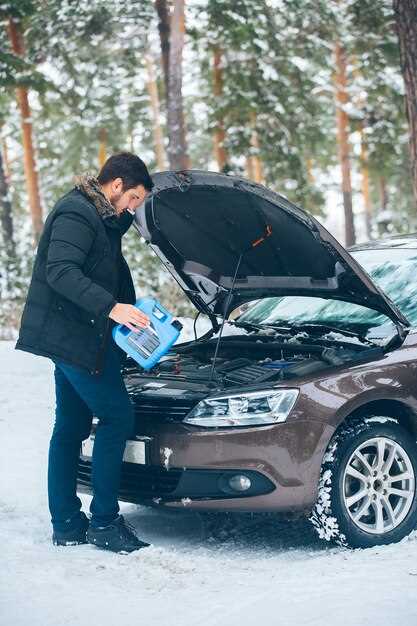How to winterize your vehicle for cold climates


As the cold weather approaches, preparing your vehicle for winter is essential for both safety and performance. The challenges posed by low temperatures, icy roads, and snow can significantly impact your driving experience. Taking the time to winterize your vehicle helps ensure that it remains reliable and safe during the harshest months of the year.
Winterizing your vehicle involves a series of proactive measures aimed at enhancing its readiness for challenging weather conditions. This process is not merely a suggestion; it is a necessity for anyone who values their safety and the dependability of their car during winter. By addressing critical components such as the battery, tires, and fluids, you can prevent mechanical failures and reduce the risk of accidents.
In this article, we will explore effective strategies and tips for winterizing your vehicle. From checking your tire treads to ensuring your antifreeze levels are adequate, each step plays a crucial role in maintaining your safety on the road. Being well-prepared means you can face winter’s challenges with confidence, knowing that your vehicle is fully equipped to handle whatever the season throws your way.
Checking and Maintaining Your Battery for Winter Performance
As winter approaches, it’s essential to check and maintain your vehicle’s battery to ensure optimal performance in cold weather. Low temperatures can significantly affect battery efficiency and can lead to unexpected failures if not properly prepped.
Start by inspecting the battery for any visible signs of wear, such as corrosion around the terminals or cracks in the casing. Corrosion can impede the flow of electricity and may result in starting issues. If you notice corrosion, clean the terminals carefully using a mixture of baking soda and water, and ensure they are tightly secured.
Next, test the battery’s voltage with a multimeter. A healthy battery should read around 12.6 volts when fully charged. If the reading falls below 12.4 volts, consider recharging or replacing the battery, as it may struggle to perform in winter conditions.
Additionally, examine the battery’s age. Most batteries last between three to five years. If yours is nearing or past this mark, it’s wise to replace it to avoid potential problems in frigid temperatures.
Check the battery fluid level, if applicable. Some batteries are maintenance-free, but if yours isn’t, ensure that the fluid covers the plates. Low fluid levels can lead to internal damage and reduced performance.
Finally, invest in a battery blanket or heater if you live in regions with extreme cold. This device can help maintain the battery temperature, ensuring it stays functional even in freezing conditions.
By diligently checking and maintaining your vehicle’s battery, you can significantly improve its reliability and performance throughout the winter months.
Preparing Your Tires for Snow and Ice Conditions

Ensuring your tires are winter-ready is crucial for safe driving in snow and ice conditions. Begin your prep by inspecting the tread depth of your tires. A depth of at least 6/32 of an inch is recommended for winter performance. If your tread is worn down, consider replacing your tires with winter or all-season tires specifically designed for cold weather.
Next, check the tire pressure. Cold temperatures can reduce tire pressure significantly, which affects traction and handling. Inflate your tires to the manufacturer’s recommended pressure, usually found on a sticker inside the driver’s door or in the owner’s manual. Make sure to monitor the pressure regularly, as it may drop with temperature changes.
Another essential aspect of winter tire prep is the alignment and balancing of your tires. Misalignment can cause uneven wear and reduced traction. Consider having a professional check your vehicle’s alignment before the winter season begins. Properly balanced tires also enhance control and improve efficiency.
Lastly, consider using tire chains or snow socks in extreme conditions. These accessories attach to your tires, providing enhanced grip on snow and ice. Ensure you practice installing them before you need to use them, as doing so in adverse weather can be challenging.
By taking these steps to prepare your tires, you can ensure better traction, enhanced control, and overall increased safety while driving in winter weather conditions.
Essential Fluids and Wiper Maintenance for Winter Safety

Preparing your vehicle for winter involves ensuring that essential fluids are at optimal levels. Start with the engine oil; consider switching to a synthetic oil with lower viscosity. This type maintains better flow at cold temperatures, ensuring your engine runs smoothly even in frigid conditions.
Next, check the coolant. The coolant should be a mixture of antifreeze and water in a 50/50 ratio. This mixture prevents freezing and protects the engine from corrosion. Inspect the levels and top off if necessary. Additionally, ensure that the heater and defroster are functioning properly to maintain visibility and comfort during winter.
Brake fluid is another critical component. Ensure it is at the correct level and free from contaminants. Regularly bleeding the brake system can also help maintain optimal performance in challenging conditions.
Do not overlook the windshield wiper fluid. Use a winter-grade fluid that can withstand sub-zero temperatures. Replace your wiper blades if they are worn out to guarantee crystal-clear visibility during snow and rain. Additionally, check for any obstructions on the windshield and keep it clean to avoid reduced visibility.
In summary, prep your vehicle by ensuring fluids are at proper levels and that wiper maintenance is addressed. This proactive approach guarantees your safety and improved performance while driving in winter conditions.



